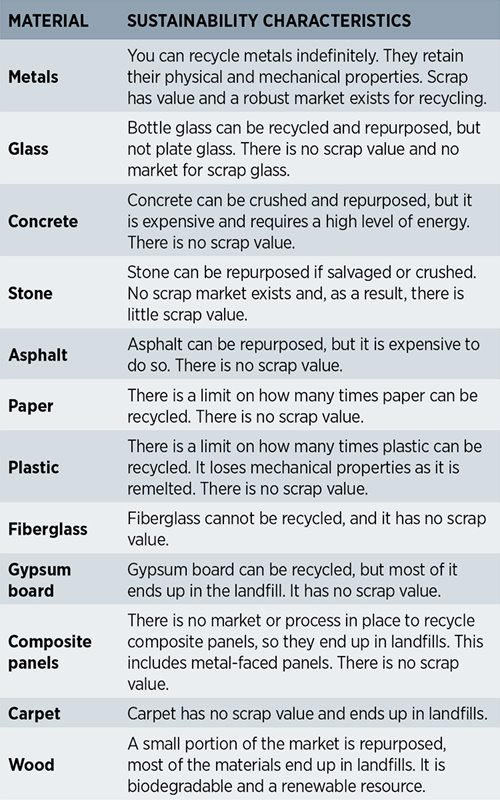 Metals are different from nearly all other materials used in our built environment. Once the useful life has ended, the metal is collected and recycled. During the recycling, the metal is remelted and reshaped, gaining back all of its original mechanical properties. Essentially, the metal is reborn to take on a new form and purpose.
Metals are different from nearly all other materials used in our built environment. Once the useful life has ended, the metal is collected and recycled. During the recycling, the metal is remelted and reshaped, gaining back all of its original mechanical properties. Essentially, the metal is reborn to take on a new form and purpose.
Metals are the only material used in constructing our world that can be used over and over again — forever.
Let’s look at the five most common metals used in architecture today and their sustainability advantages.
Aluminum
The collection, shredding and melting of aluminum returns more than 65 percent of this metal back into the marketplace each year.
Aluminum recycling is an extremely important aspect of metal production as well. It effectively keeps costs down and reduces harm to the environment.
In the United States, 80 percent of the aluminum produced is from recycling.
Copper
More than ever, copper is in high demand. The metal is corrosion-resistant and conducts heat and electricity efficiently, making it highly desirable for the explosion of technological applications in today’s world.
Copper has demonstrated health-related benefits as well. In the last several decades, there has been substantial testing on the efficacy of various surfaces and wipes to eliminate harmful bacteria. Copper and copper alloys have performed extremely well.
Stainless Steel
Stainless steel alloys are considered hygienic and are acceptable for drinking water, food preparation, dairy operations and medical devices including implants. It is used in hospitals, clean rooms, restaurants, bathrooms and more.
Stainless steel doesn’t promote bacterial growth, nor does it provide a surface for bacteria to collect and flourish. Most stainless steel surfaces are as easy to clean as glass or ceramic surfaces.
Recycling of stainless steel has grown dramatically and has become the main raw source of the metal. The International Stainless Steel Forum states that objects today made of stainless steel have an average recycling content of approximately 60 percent.
Steel
In the built world, iron is ubiquitous. It offers longevity and can be melted and reused indefinitely. The recycling of iron and steel is well-established across the globe.
Specialized mills with electric arc furnaces have helped increase the demand for recycling, as well as reduced the energy consumption of steel production. The energy required to recycle scrap is approximately a third of the energy required from the ore production route.
Zinc
Today, using zinc as a steel coating in the process known as galvanizing is considered an environmental and sustainable coating process. There are no VOCs (volatile organic compounds) released during the process. Furthermore, it results in a steel product that will last longer and have far less maintenance when properly done as compared to paint coatings. The initial cost of galvanizing is very low as well.
On top of this, steel and zinc can be recovered and recycled. Recycling of existing zinc currently stands at about 30 percent. It is expected to increase as new systems of recovery bring the cost of recycling down. Recycling zinc from sheet, scrap zinc and stamped zinc is relatively straightforward. As the steel is heated, the zinc melts and vaporizes. From the vapors, the zinc is removed and repurposed. Another method is clearing the zinc by leaching the metal with acid and electrowinning it to recover it from the acid bath.